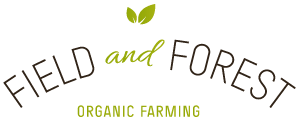Knowledge of the medicinal plants as an asset for development of future business
Leading researcher Dr Arta Kronberga highlights: “we have adapted cultivation technologies for each of the plant species to obtain the highest yield with the best quality. As a result, we will gain the knowledge to pass on to entrepreneurs and they will be able to make practical decisions for development of new business niches.”
At the beginning of the research, IES’s scientists chose 9 wild medicinal and aromatic plant species that are already highly demanded in the global market- cowslip (Primula veris), woodruff (Galium odoratum), mezereon (Daphne mezereum), coltsfoot (Tussilago farfara), pasqueflower (Pulsatilla pratensis), lily of the valley (Convallaria majalis), ground-ivy (Glechoma hederacea), greater celandine (Chelidonium majus) and lady’s mantle (Alchemilla spp). These plants can supply valuable raw materials for the pharmaceutical, cosmetics and food industries.
Despite the widely known good characteristics of these plants, there is a lack of knowledge how to grow them for commercial needs. To develop new high value-added products with export potential, entrepreneurs and farmers need research-based information about the suitable plant cultivation methods, as well as the composition of valuable active substances that these plants contain. Therefore, building co-operations between scientists, entrepreneurs and farmers are needed. Over the past few years, the Institute for Environmental Solutions has conducted a number of studies to unlock the knowledge bout medicinal plants and their commercialization potential.
In this study, IES’s researchers have looked in depth at each phase of the plant's development. Thus, complete information on the advantages and disadvantages of each plant species is available. Dr Arta Kronberga describes the research: “we have evaluated each phase of the plant’s development processes – collection of wild populations, seed germination, growing in field conditions, harvesting and evaluation of chemical compound levels in the yield. Considering the growing demand for medicinal plants and other biological raw materials, such knowledge can become an important equity for development of future business lines.”
Seed germination evaluation for selected medicinal and aromatic plants
Fast and even sprouting is one of the main prerequisites for growing MAPs for commercial use. During the sprouting, a plant must outcompete its rivals – weeds. Higher competitiveness of a plant means better germination rate, higher production, and yield. In order to develop the best seed sprouting technology for each species, researchers have tested a variety of sprouting environments, such as climate chamber and greenhouses.
Growing tests in field conditions
For these tests IES’s researchers developed plant-growing experimental fields in which they modelled commercial growing conditions. Thus, researchers can evaluate which growing methods are the most suitable for each of the plant species. Researchers evaluated the speed of plant development, how easy it is to harvest the yield by using agricultural machinery and how to apply organic fertiliser. Researchers have also assessed such details of growing conditions as the distance between plants in rows. Distance between plants has a significant impact on the plant competitiveness with weeds. The difference can be seen in the plant development, for example, if pasqueflower is planted close to each other the competitiveness with weeds is much higher. As a result, these plants are few centimetres higher than those that are planted with larger gaps. Summer of 2021 is the closing season for growing tests in experimental fields. Researchers carry out harvesting of medical plants from field trials and further assess the results.
Assessment of the plant chemical composition
Samples from growing tests in experimental fields IES’s researchers pass on to Latvian Institute of Organic Synthesis experts who evaluate the active compound concentration. These tests will provide an insight into which active substances can be found in these plants and how valuable are each of the species. Dr Arta Kronberga explains first results of chemical composition assessment: “chemical composition tests are still ongoing, but we have received first results. We can see that wild plant species that are grown in experimental fields show unique results. For example, together with Latvian Institute of Organic Synthesis experts we have discovered that in some plant species valuable active compounds can be found and there are no previous mentions in the scientific literature.”
Last vegetation season is carried out in experimental growing fields. IES’s researchers continue the harvest and sample gathering for active compound concentration tests. At the same time, the study is coming to an end and scientists are working on gathering the acquired knowledge.
The research is a part of the project “Innovative solutions for growing technologies and applications of spring medicinal and aromatic plants” (Nr. 1.1.1.1/18/A/043). It is supported by European Regional Development Fund, as a part of Measure 1.1.1.1 “Industry-Driven Research” of specific objective 1.1.1 “To increase the research and innovation capacity of scientific institutions of Latvia and their ability to attract external funding by investing in human resources and infrastructure”.
Read more about the research here.
